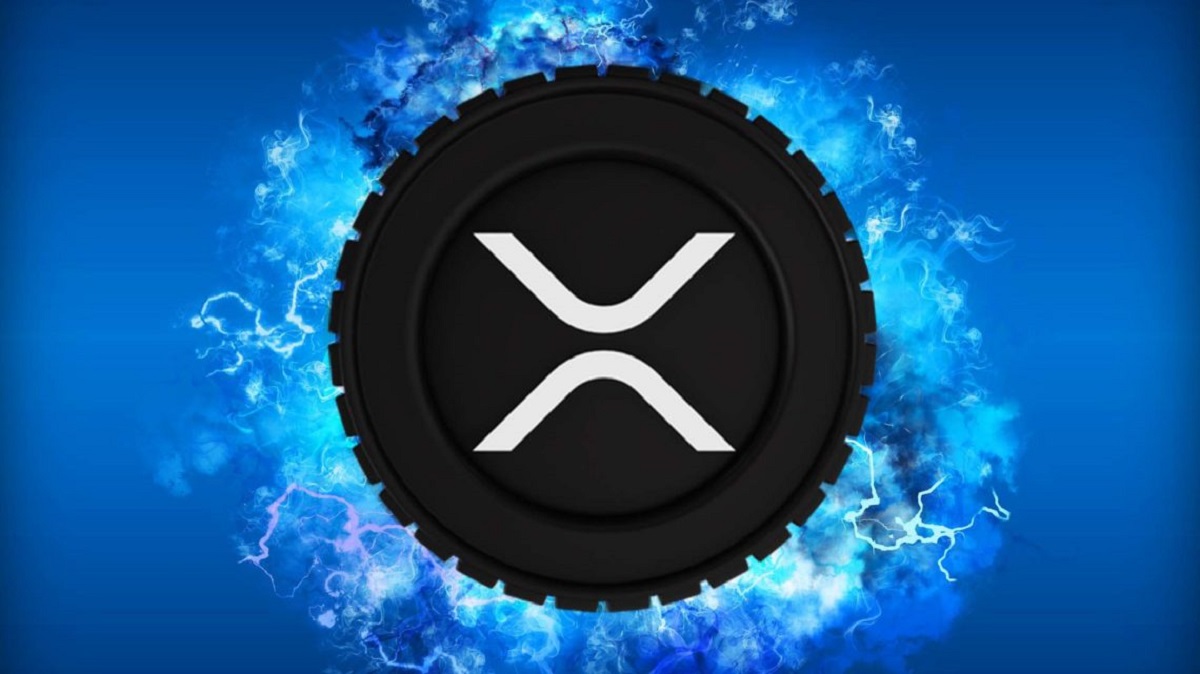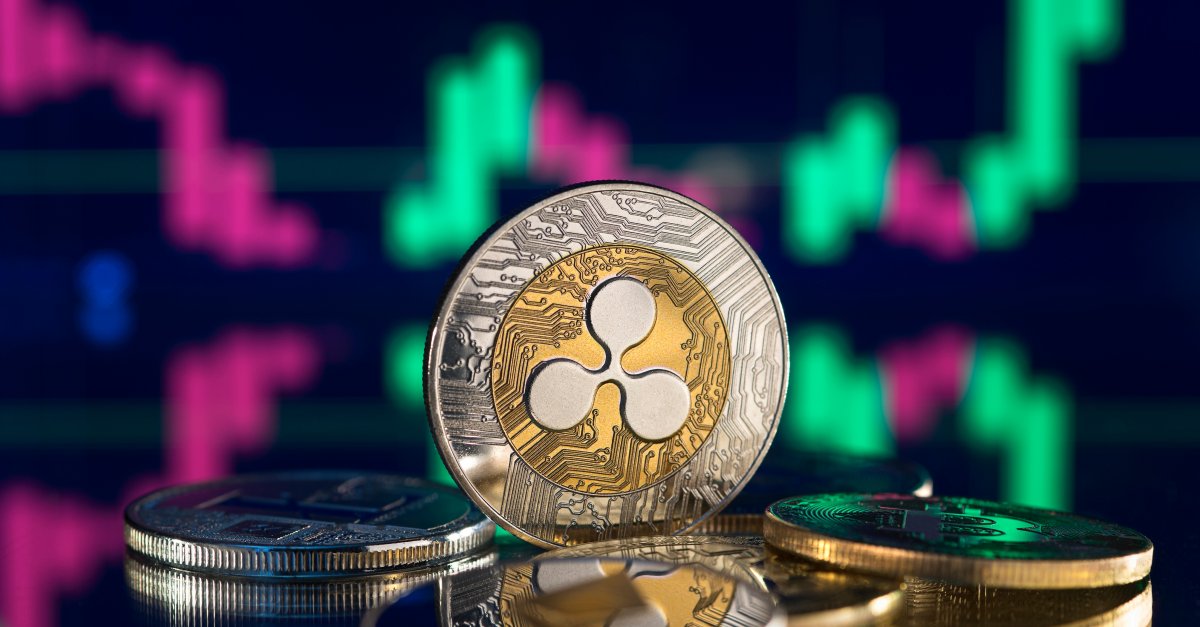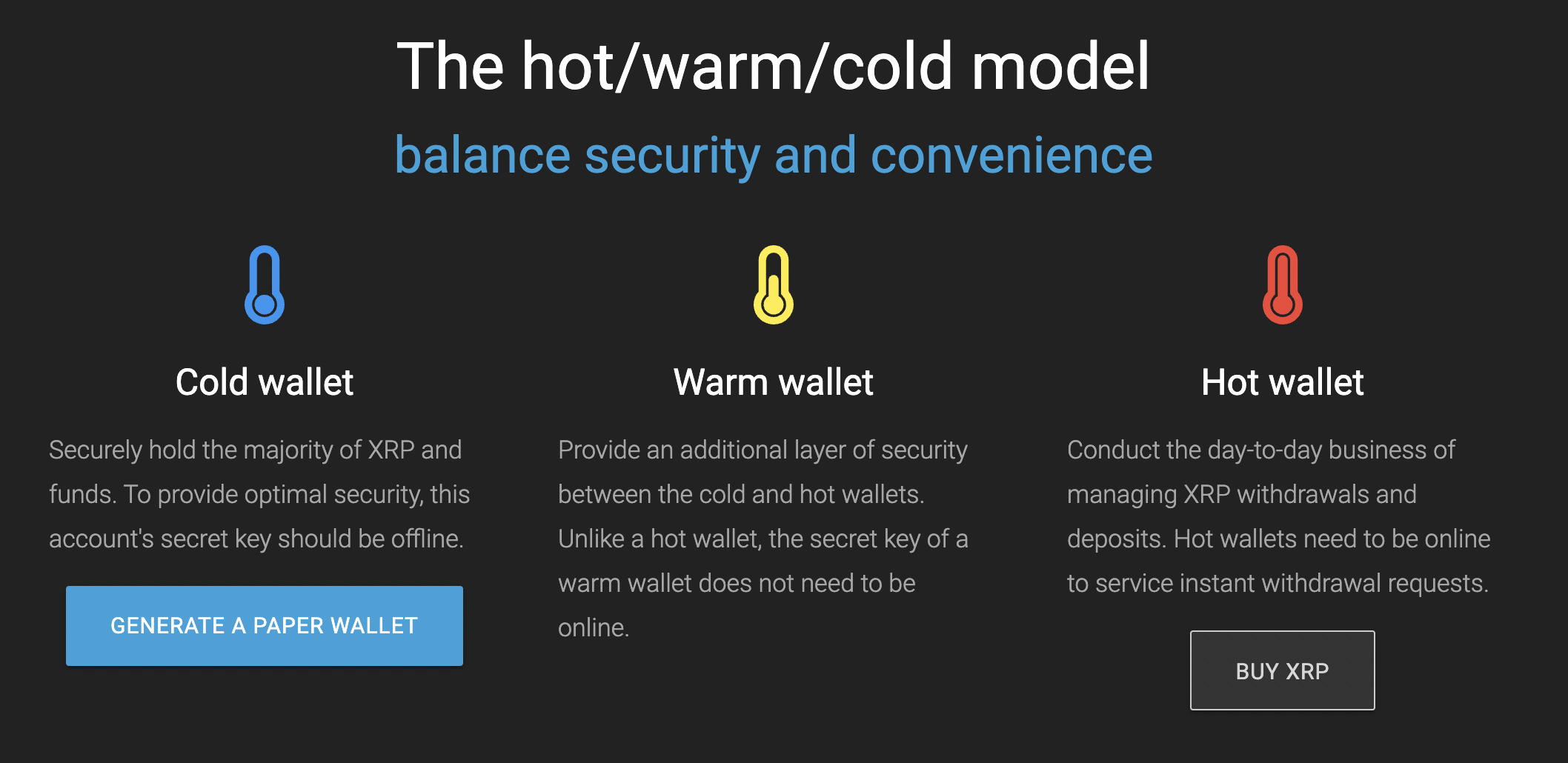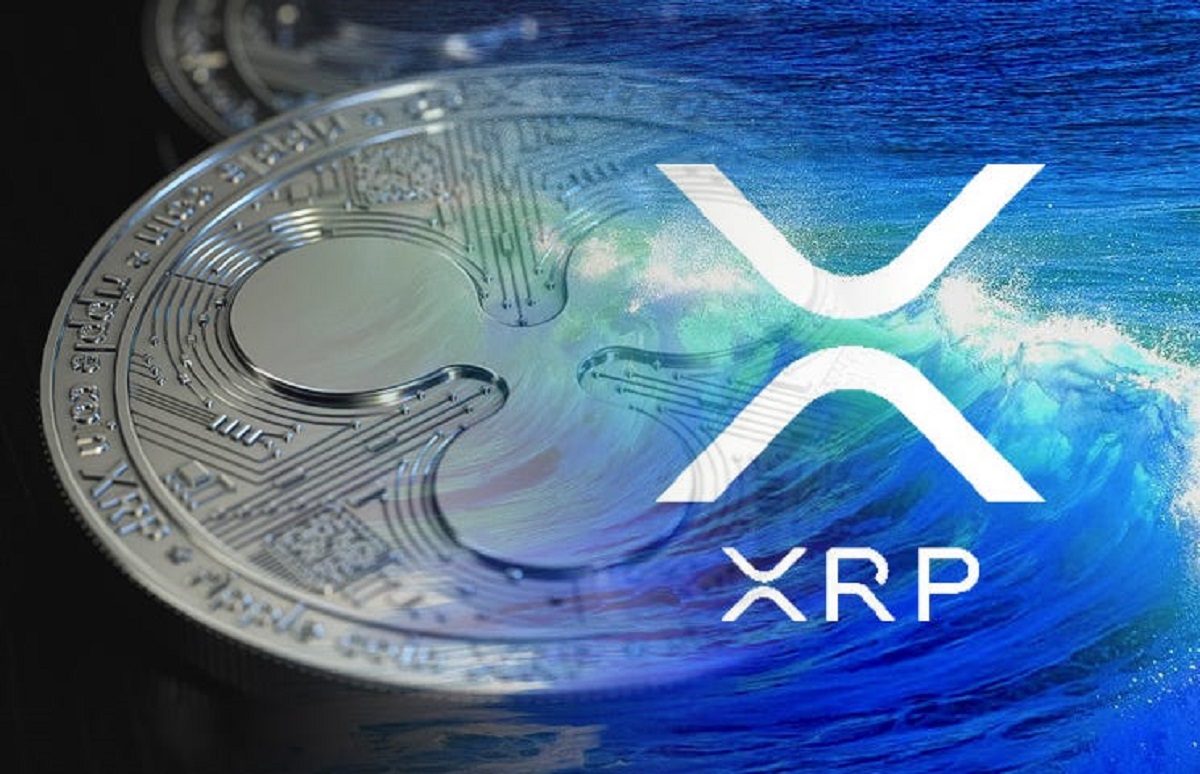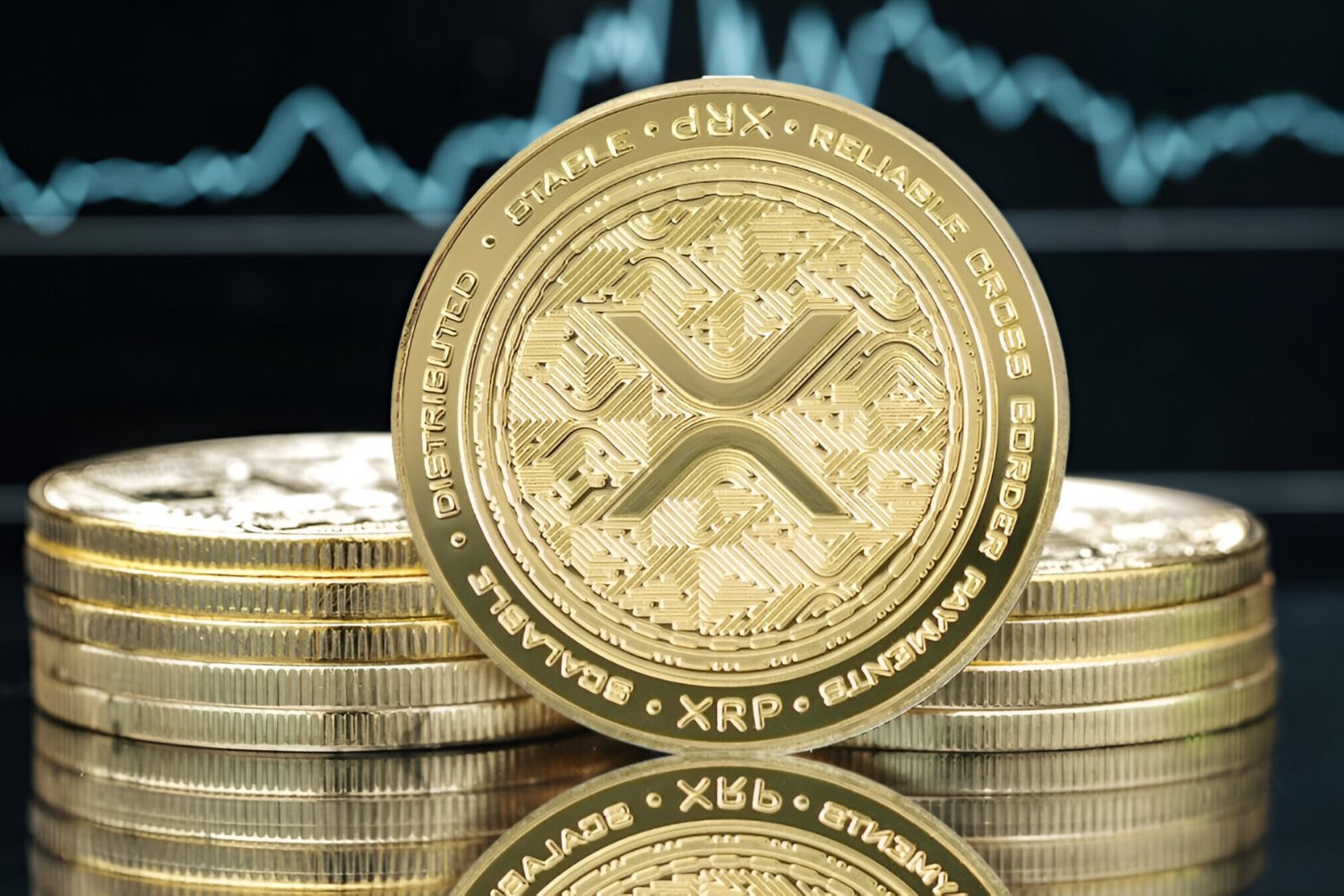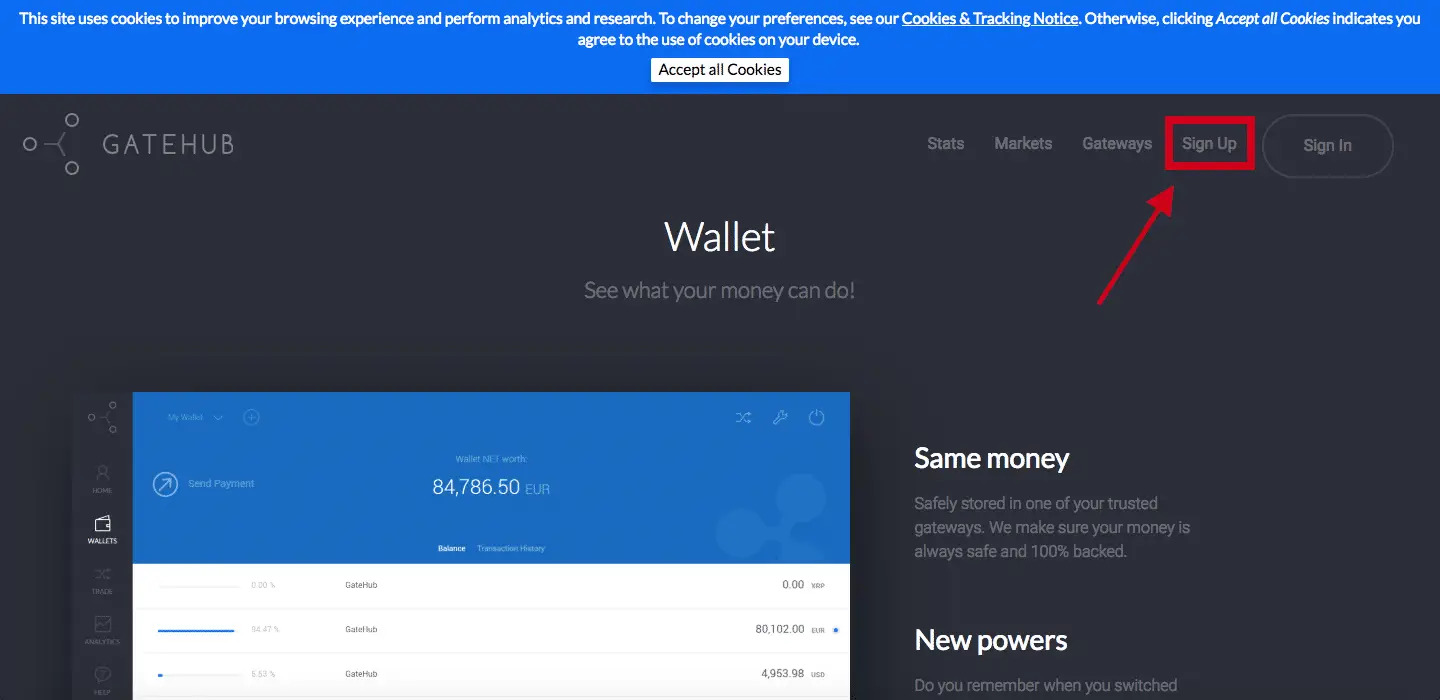Introduction
Welcome to the world of cryptocurrencies, where a single decision from an exchange can significantly impact the availability and trading of a digital asset. One such case is the delisting of Ripple’s XRP from major exchanges, which sent shockwaves throughout the crypto community. This article delves into the factors that led to XRP being delisted and explores the potential paths for its relisting.
In December 2020, the U.S. Securities and Exchange Commission (SEC) filed a lawsuit against Ripple Labs, the company behind XRP, alleging that the digital asset is an unregistered security. This legal action prompted several prominent cryptocurrency exchanges to halt XRP trading and eventually delist the digital asset on their platforms.
The delisting of XRP had a profound impact on its liquidity, trading volume, and investor sentiment. Many holders of XRP found themselves unable to trade the asset on their preferred platforms, leading to price declines and uncertainty in the market. The regulatory uncertainty surrounding XRP caused many exchanges to err on the side of caution and distance themselves from the digital asset.
However, it is essential to note that the delisting of XRP does not necessarily indicate its demise. There is still hope for the digital asset to be relisted, which could potentially revive its trading activity and investor confidence. The path to relisting XRP is intertwined with factors such as regulatory clarity, Ripple’s ongoing legal battle, market sentiment, and exchange announcements.
This article will explore each of these factors in detail, shedding light on the possibility of XRP’s relisting and its potential impact on the cryptocurrency market. Whether you are a Ripple enthusiast, an investor, or simply curious about how exchanges make listing decisions, this article will provide valuable insights into the XRP relisting saga.
Factors that led to XRP being Delisted
The decision to delist XRP from major cryptocurrency exchanges was primarily driven by a combination of regulatory concerns, the ongoing legal battle between Ripple Labs and the SEC, and the impact on market sentiment. Let’s explore each factor in more detail:
1. Regulatory Uncertainty: The SEC’s lawsuit against Ripple Labs alleging that XRP is an unregistered security created significant regulatory uncertainty surrounding the digital asset. Exchanges, being diligent in their compliance efforts, chose to delist XRP to mitigate potential regulatory risks. With no clear regulatory framework for cryptocurrencies in the United States, exchanges err on the side of caution when it comes to assets with legal uncertainties.
2. Ripple’s Legal Battle with the SEC: Ripple Labs, the company responsible for XRP’s development and distribution, is engaged in an ongoing legal battle with the SEC. The outcome of this lawsuit has far-reaching implications for XRP’s regulatory status. Until there is clarity on whether XRP is classified as a security or not, exchanges are reluctant to continue supporting the digital asset, leading to its delisting.
3. Market Sentiment: The SEC’s lawsuit and subsequent delistings created a negative sentiment around XRP in the market. Investors, concerned about the legal risks and uncertain future of XRP, began selling their holdings, causing a significant decline in price. This negative sentiment, coupled with the lack of availability on major exchanges, further eroded confidence in XRP among market participants.
These factors combined to create a challenging environment for XRP, ultimately resulting in its delisting from major exchanges. However, it is important to note that delisting does not imply the end of XRP. It is merely a reaction to the current regulatory landscape and legal uncertainties surrounding the digital asset.
As the next sections will explore, there is still a possibility for XRP to be relisted once regulatory clarity is achieved, Ripple’s legal battle is resolved, and market sentiment shifts. The journey to relisting may be complex, but it offers hope for XRP investors and enthusiasts alike.
How XRP can Potentially be Relisted
The relisting of XRP on major exchanges is not an impossible feat. There are several potential paths that could lead to its relisting. Let’s explore some of these possibilities:
1. Regulatory Clarity: One of the key factors that could pave the way for XRP’s relisting is regulatory clarity. If the SEC’s lawsuit against Ripple Labs concludes with a favorable outcome for XRP, providing a clear regulatory classification for the digital asset, exchanges may reconsider their decision to delist and reinstate trading for XRP. The establishment of a regulatory framework specifically addressing cryptocurrencies like XRP would instill confidence among exchanges and investors.
2. Settlement or Resolution: Ripple Labs may reach a settlement or resolution with the SEC before the lawsuit reaches trial. A settlement could potentially address the regulatory concerns and serve as a catalyst for exchanges to relist XRP. This would require Ripple to address any alleged violations and implement measures to ensure compliance with securities regulations. A resolution in favor of Ripple could also help restore market sentiment and bolster the case for relisting.
3. Independent Exchanges: While major exchanges like Coinbase, Binance, and Kraken delisted XRP due to regulatory concerns, smaller and more independent exchanges may choose to list XRP. These exchanges may have different risk appetites or operate under different regulatory jurisdictions, allowing them to relist XRP without facing immediate regulatory consequences. However, the liquidity and trading volume on these exchanges may be lower compared to the major platforms.
4. Rebranding or Restructuring: Ripple Labs could consider rebranding or restructuring itself, dissociating from the legal controversy surrounding XRP. By demonstrating a commitment to compliance and implementing transparent governance practices, Ripple may regain the trust of exchanges and investors. This rebranding or restructuring effort could pave the way for XRP’s relisting and help restore its reputation in the market.
5. Investor Pressure: The collective pressure from XRP investors could also play a role in XRP’s potential relisting. If the XRP community rallies together and demonstrates strong support for the relisting of the digital asset, exchanges may take notice. This could encourage exchanges to revisit their listing policies and consider reinstating XRP trading to cater to the demand and protect their user base.
While these paths offer potential avenues for XRP’s relisting, it is important to note that they are not guaranteed outcomes. Each potential path involves its own set of challenges, and the final decision ultimately rests with the exchanges themselves. The market, regulatory developments, and Ripple Labs’ actions will all play a crucial role in determining the likelihood and timing of XRP’s potential relisting.
Regulatory Clarity on XRP
One of the key factors that could significantly impact the relisting of XRP is regulatory clarity. The resolution of the ongoing legal battle between Ripple Labs and the U.S. Securities and Exchange Commission (SEC) holds the potential to provide the necessary clarity on the regulatory status of XRP. Let’s delve into the importance of regulatory clarity for XRP’s relisting:
The SEC Lawsuit: The SEC’s lawsuit alleges that XRP is an unregistered security, which raises significant regulatory concerns. This legal action has cast a shadow of uncertainty over the regulatory status of XRP, leading to its delisting from major cryptocurrency exchanges. The resolution of the lawsuit will determine whether XRP is deemed a security or not, providing much-needed regulatory clarity for the digital asset.
Impact on Exchanges: Exchanges face regulatory risks when listing and trading digital assets. They need clarity on whether a particular asset complies with securities laws and regulations. The current lack of regulatory clarity surrounding XRP has made exchanges cautious, leading to the delisting of the digital asset from their platforms. With clear guidance from regulators, exchanges would have a more solid foundation on which to make listing decisions, opening the possibility for the relisting of XRP.
Investor Confidence: Regulatory clarity not only benefits exchanges but also instills confidence in investors. When investors have a clear understanding of the legal and regulatory framework surrounding an asset, they can make more informed decisions. The resolution of the SEC lawsuit and subsequent regulatory clarity would boost investor confidence in XRP, potentially leading to increased demand and liquidity for the digital asset.
Standardization: Regulatory clarity can foster standardization within the cryptocurrency industry. Clear guidelines on compliance requirements, registration procedures, and investor protections can help establish a more mature and transparent marketplace. This standardization would be beneficial not only for XRP but for the broader adoption and acceptance of all digital assets.
International Implications: Regulatory clarity on XRP’s status would have international implications as well. The determination of whether XRP is a security or not in the United States could influence regulatory decisions in other jurisdictions. Once a clear regulatory status is established, it could influence how other countries classify and regulate XRP, potentially leading to relisting on global exchanges.
Acquiring regulatory clarity for XRP is a complex process that requires careful examination of the legal arguments, regulatory frameworks, and precedents. The outcome of the lawsuit will set a precedent for future regulatory decisions regarding digital assets. It is crucial for the SEC and Ripple Labs to reach a resolution that provides the necessary clarity for exchanges, investors, and the entire cryptocurrency ecosystem.
Once regulatory clarity is achieved, exchanges will have a clearer picture of the compliance requirements for listing XRP. This increased certainty could pave the way for the relisting of XRP, breathing new life into its trading activity and market sentiment.
Ripple’s Ongoing Legal Battle
One of the key factors influencing the relisting of XRP is Ripple Labs’ ongoing legal battle with the U.S. Securities and Exchange Commission (SEC). The outcome of this lawsuit holds significant implications for the regulatory status and future of XRP. Let’s delve into the details of Ripple’s legal battle and its impact on XRP’s relisting:
The SEC Lawsuit: In December 2020, the SEC filed a lawsuit against Ripple Labs, alleging that XRP is an unregistered security. The lawsuit accuses Ripple Labs and its executives of conducting an ongoing, unregistered securities offering, resulting in market manipulation and investor harm. This legal action triggered a wave of delistings and heightened regulatory concerns surrounding XRP.
Legal Arguments: Ripple Labs vehemently denies the SEC’s allegations and is vigorously defending its case. Ripple contends that XRP is not a security but rather a digital currency with utility use cases. The company argues that XRP’s decentralization and widespread adoption in various industries distinguish it from traditional securities. The resolution of these legal arguments will have significant implications for XRP’s regulatory status and the potential for its relisting.
Impact on Exchanges: Ripple’s legal battle has caused major exchanges to exercise caution and delist XRP from their platforms. Exchanges, as regulated entities, must comply with securities laws and regulations to protect their users and avoid potential legal repercussions. Until there is more clarity on the SEC’s allegations and the regulatory status of XRP, exchanges are likely to maintain their delisting decisions, hindering XRP’s relisting prospects.
Market Sentiment: Ripple’s legal battle has had a profound impact on market sentiment surrounding XRP. The lawsuit has created uncertainty and negative perception among investors, causing many to sell their XRP holdings. The decline in market sentiment further complicates the relisting of XRP, as exchanges factor in investor sentiment when making listing decisions.
Potential Outcomes: The resolution of Ripple’s legal battle could take several possible paths. It may result in a settlement or agreement with the SEC, where Ripple Labs agrees to certain regulatory conditions, potentially providing a pathway for XRP’s relisting. Alternatively, the legal battle could proceed to trial, where a court ruling would determine the regulatory status of XRP. The outcome of the lawsuit and any subsequent legal developments will significantly impact the chances of XRP’s relisting.
Industry Impact: Ripple’s legal battle has broader implications for the cryptocurrency industry as a whole. The outcome of this case could establish legal precedents and guidelines for how digital assets should be treated under securities laws. These developments could reshape the regulatory landscape and influence the relisting decisions of exchanges not only for XRP but for other digital assets as well.
Ripple Labs’ ongoing legal battle with the SEC plays a pivotal role in the relisting prospects of XRP. The resolution of the case will provide much-needed clarity on the regulatory status of XRP and potentially pave the way for exchanges to reconsider their delisting decisions. However, until there is a final resolution or settlement, the legal uncertainty surrounding XRP will likely impede its path to relisting.
XRP’s Price Impact and Market Sentiment
The delisting of XRP from major cryptocurrency exchanges has had a significant impact on its price and market sentiment. The regulatory concerns and legal battles surrounding XRP have created uncertainty and negativity among investors. Let’s explore the price impact and market sentiment surrounding XRP:
Price Decline: The delisting of XRP from prominent exchanges resulted in a sharp decline in its price. With reduced access to liquidity and trading platforms, investors were left with limited options to buy, sell, or trade XRP. This lack of market demand, coupled with regulatory uncertainty, contributed to a downward pressure on XRP’s price. Many XRP holders saw a decrease in their investment value, leading to a loss of confidence in the digital asset.
Volatility: The delisting of XRP brought increased volatility to its price. The lack of availability on major exchanges made it more difficult for investors to execute trades and arbitrage opportunities. This reduced liquidity resulted in larger price swings and increased market volatility for XRP. Traders and investors were hesitant to engage in XRP trading due to the uncertainties surrounding its regulatory status, adding to the price volatility.
Uncertainty: The regulatory concerns and legal battles surrounding XRP have created a sense of uncertainty among investors and market participants. The outcome of the SEC lawsuit against Ripple Labs will have profound implications for XRP’s future. This uncertainty, combined with the delisting from major exchanges, has negatively affected investor sentiment and confidence in XRP. Many investors are adopting a wait-and-see approach, observing developments before making further investment decisions in XRP.
Investor Confidence: The delisting of XRP has impacted overall investor confidence in the digital asset. The regulatory uncertainties and legal implications have eroded trust and faith in XRP as a viable investment. Investors are looking for regulatory clarity and a resolution to the ongoing legal battle before considering re-entering the XRP market. This lack of investor confidence further complicates the potential relisting of XRP, as exchanges take into account investor sentiment when making listing decisions.
Recovery Prospects: The recovery of XRP’s price and market sentiment relies heavily on the resolution of the regulatory concerns and legal battles it is facing. Regulatory clarity and a positive outcome in Ripple Labs’ legal battle with the SEC could help restore investor confidence and potentially lead to the relisting of XRP on major exchanges. However, until these uncertainties are addressed, there is likely to be continued volatility and subdued market sentiment surrounding XRP.
In summary, the delisting of XRP from major cryptocurrency exchanges has had a detrimental impact on its price and market sentiment. The regulatory uncertainties and legal battles have created a sense of uncertainty and negativity among investors. The road to recovery for XRP depends on the resolution of these regulatory concerns and legal battles, which will play a significant role in restoring investor confidence and potentially leading to its relisting on major exchanges.
Potential Timing for Relisting XRP
The timing for the potential relisting of XRP is subject to a variety of factors, including the resolution of regulatory concerns, the outcome of Ripple’s legal battle with the SEC, market sentiment, and exchange announcements. While it is challenging to predict an exact timeframe, let’s explore potential scenarios for the relisting of XRP:
Regulatory Clarity: The resolution of the regulatory concerns surrounding XRP is crucial for its relisting. If the SEC lawsuit against Ripple Labs concludes with a determination that XRP is not a security or with a settlement that provides a clear regulatory framework, exchanges may consider relisting XRP. The establishment of clear guidelines and compliance requirements for XRP would instill confidence among exchanges and pave the way for its relisting.
Ripple’s Legal Battle: The outcome of Ripple’s legal battle with the SEC will significantly impact the potential timing for XRP’s relisting. If Ripple Labs reaches a settlement or resolution with the SEC before the lawsuit reaches trial, it could create a path for the relisting of XRP. On the other hand, if the legal battle proceeds to trial, the timing for a resolution and its potential impact on XRP’s relisting becomes less predictable.
Market Sentiment: Market sentiment plays a crucial role in the relisting of XRP. As the regulatory concerns and legal battles surrounding XRP are resolved, positive market sentiment may return. Investors will be monitoring developments closely and assessing the level of regulatory clarity and confidence in XRP. A shift towards more positive sentiment could influence exchanges to reconsider their delisting decisions and reinstate XRP trading.
Exchange Announcements: Exchange announcements will also impact the potential timing for XRP’s relisting. As regulatory clarity improves and market sentiment shifts, exchanges may issue statements regarding their intention to relist XRP. These announcements may come from major exchanges that were previously cautious due to regulatory uncertainties. Smaller exchanges or those operating in different jurisdictions may take the lead in relisting XRP, paving the way for wider adoption.
Industry Developments: The broader developments within the cryptocurrency industry can also influence the timing for XRP’s relisting. Regulatory shifts or precedents set in other jurisdictions may impact the regulatory landscape for XRP, potentially expediting its relisting process. Collaborative efforts between Ripple Labs, regulators, and the industry could also contribute to a more favorable environment for XRP’s relisting.
In summary, the potential timing for the relisting of XRP is influenced by several factors, including regulatory clarity, the outcome of Ripple’s legal battle, market sentiment, exchange announcements, and industry developments. While an exact timeframe is uncertain, the resolution of the regulatory concerns and legal battles surrounding XRP, along with a positive shift in market sentiment, are crucial steps towards its relisting. Continued monitoring of these factors and their impact on the cryptocurrency ecosystem can offer insights into the potential timing for XRP’s relisting.
Exchange Announcements and Their Influence
Exchange announcements regarding the relisting of XRP play a significant role in shaping its potential resurgence. As regulatory concerns and market sentiment evolve, the decisions made by exchanges regarding XRP can significantly impact its relisting prospects. Let’s explore the influence of exchange announcements on XRP:
Market Confidence: Exchange announcements regarding the relisting of XRP can help restore market confidence in the digital asset. When reputable and influential exchanges publicly express their intention to relist XRP, it signals to investors and the broader market that there is renewed trust and belief in the asset. This boost in market confidence can attract new investors, increase trading activity, and potentially contribute to a positive price movement for XRP.
Validation of Regulatory Clarity: Exchange announcements can act as a validation of regulatory clarity surrounding XRP. When prominent exchanges relist XRP, it indicates that they have obtained sufficient regulatory guidance and are confident in the legal status of the asset. This validation can help ease concerns among other exchanges, encouraging them to reconsider their delisting decisions and relist XRP. It also sends a signal to investors that there is a clear regulatory framework in place, further bolstering market confidence.
Increased Liquidity: Exchange announcements regarding XRP’s relisting can lead to an increase in liquidity for the digital asset. When more exchanges list XRP, it broadens the availability of trading options and attracts a larger pool of investors. The increased liquidity can provide greater price stability and trading volume, making XRP a more attractive investment option and potentially contributing to a more vibrant XRP market ecosystem.
Market Accessibility: Exchange announcements of XRP’s relisting provide greater market accessibility for investors. When XRP is relisted on major exchanges, it becomes accessible to a wider audience of traders and investors. This increased accessibility expands the potential market for XRP, enabling more participants to buy, sell, and trade the digital asset. The enhanced market accessibility can have a positive impact on liquidity and trading activity for XRP.
Influence on Other Exchanges: Exchange announcements can influence other exchanges’ decisions regarding XRP’s relisting. When prominent exchanges relist XRP, it sets a precedent and encourages other exchanges to review their own listing policies. This influence can lead to a domino effect, prompting more exchanges to reconsider their stance on XRP and potentially relist the digital asset. The collective relisting effort can contribute to a broader and more diverse range of platforms offering XRP trading.
Exchange announcements regarding the relisting of XRP are essential catalysts for its revival. They signal improved market confidence, validate regulatory clarity, increase liquidity, facilitate market accessibility, and influence other exchanges’ decisions. However, it is important to note that exchange announcements themselves are influenced by various factors, including regulatory developments, market conditions, and investor sentiment. Close attention to exchange announcements and their influence within the cryptocurrency market can provide insights into the potential relisting of XRP on major platforms.
Investor Sentiment and Expectations for Relisting
Investor sentiment plays a crucial role in the relisting of XRP, as it influences market demand and exchange decisions. The expectations surrounding the relisting of XRP are shaped by various factors, including regulatory clarity, Ripple’s legal battle, market sentiment, and industry developments. Let’s explore investor sentiment and expectations for XRP’s relisting:
Optimism for Regulatory Clarity: Investors are eagerly awaiting regulatory clarity on the status of XRP. A clear regulatory framework would provide certainty and reassurance to investors, influencing their confidence in XRP and their expectations for its relisting. There is an overall optimism that regulatory clarity will be achieved, which could trigger a positive shift in investor sentiment and heightened expectations for the relisting of XRP.
Impact of Ripple’s Legal Battle: Investor sentiment is closely tied to the outcome of Ripple Labs’ legal battle with the SEC. A favorable outcome for Ripple could result in increased investor confidence and expectations for the relisting of XRP. On the other hand, a negative outcome could prolong the uncertainty surrounding XRP and dampen expectations. Investors are monitoring the legal proceedings closely, as they understand that the resolution of the legal battle will significantly influence the prospects of XRP’s relisting.
Market Demand and Investor Interest: Despite the challenges faced by XRP, there remains a considerable investor interest in the digital asset. Investors recognize the potential value and utility of XRP, driving their expectation for its relisting. The prospect of increased market demand, liquidity, and trading opportunities once XRP is relisted contributes to a positive investor sentiment and fuels expectations for the relisting on major exchanges.
Alignment with Exchanges: Investors’ expectations for the relisting of XRP are closely tied to the positions of exchanges. Investors anticipate that exchanges will revisit their delisting decisions as regulatory clarity improves and market sentiment shifts. The alignment of investor expectations with exchange actions can contribute to a more favorable environment for the relisting of XRP.
Industry Developments: Investor sentiment and expectations for the relisting of XRP are influenced by broader industry developments. Positive regulatory shifts, collaborations between Ripple Labs and other industry participants, and international regulatory precedents can shape investor sentiment and solidify expectations for XRP’s relisting. Investors are monitoring industry developments for signs of progress and anticipating how these developments may impact the relisting prospects of XRP.
Investors are looking for signs of regulatory clarity, positive legal outcomes, market demand, and alignment among exchanges when forming their expectations for the relisting of XRP. While expectations may vary among investors, the collective sentiment and anticipation for improved market conditions and the potential relisting of XRP contribute to the overall investor outlook for the digital asset.
Conclusion
The delisting of XRP from major cryptocurrency exchanges has raised significant concerns and uncertainty surrounding its future. However, there are several factors that could potentially pave the way for its relisting and rejuvenate market activity. Regulatory clarity is crucial, as it would provide a clear framework for XRP’s classification and compliance requirements. The resolution of Ripple Labs’ ongoing legal battle with the SEC also holds immense weight in determining the regulatory status and relisting prospects of XRP.
Market sentiment plays a pivotal role, as positive investor sentiment and increased demand are vital for the relisting of XRP. Exchange announcements regarding XRP’s relisting can restore market confidence, increase liquidity, and influence other exchanges to reconsider their delisting decisions. Investor sentiment and expectations for the relisting are shaped by regulatory developments, Ripple’s legal battle, market conditions, and industry dynamics.
While the exact timing for XRP’s relisting is uncertain, continued monitoring of these factors will provide valuable insights into its potential relisting prospects. The relisting of XRP has the potential to boost investor confidence, increase liquidity, and redefine market dynamics for the digital asset.
As Ripple Labs, exchanges, regulators, and investors navigate through this challenging landscape, it is important to remain engaged, informed, and adaptable. The ultimate goal is to establish regulatory clarity, resolve legal disputes, and create an environment that fosters market confidence and transparency for digital assets like XRP.
Only through a combination of regulatory clarity, market demand, and supportive exchange decisions can XRP undergo a potential relisting that may reinvigorate investor sentiment, increase liquidity, and redefine its position within the cryptocurrency market.







